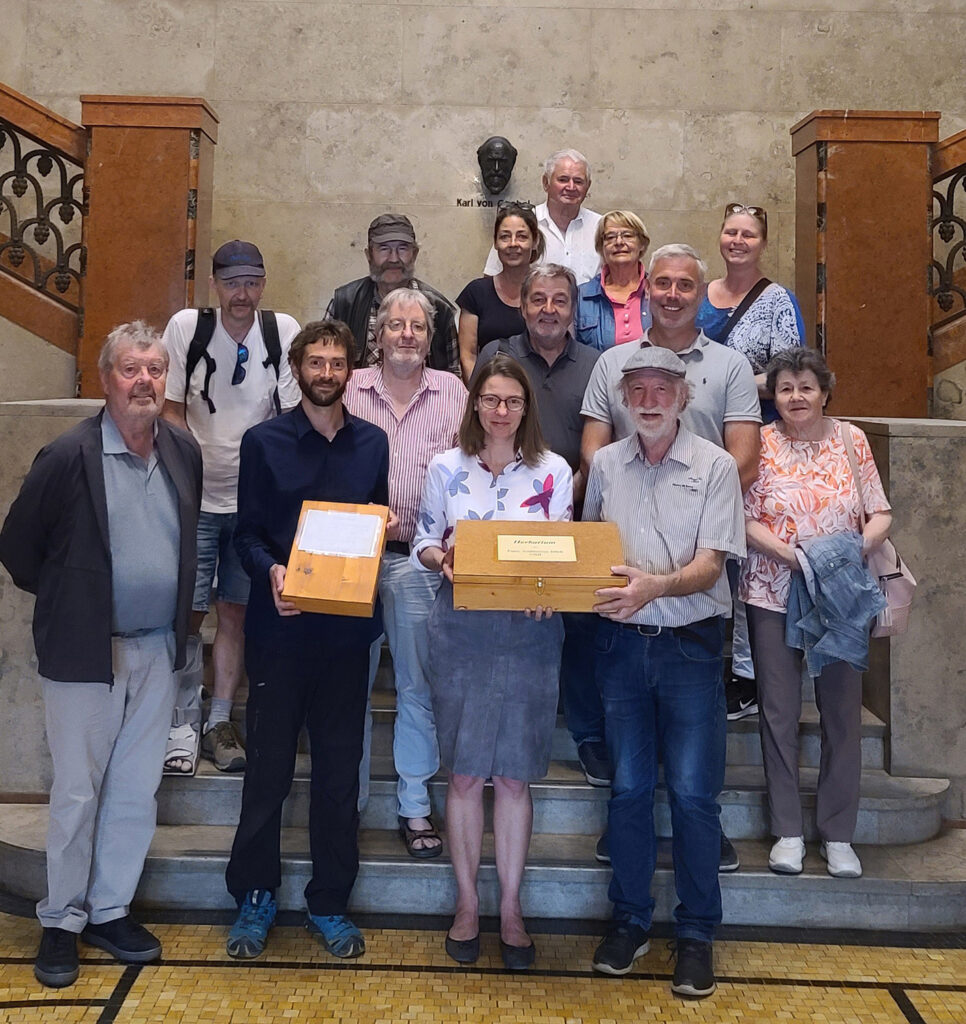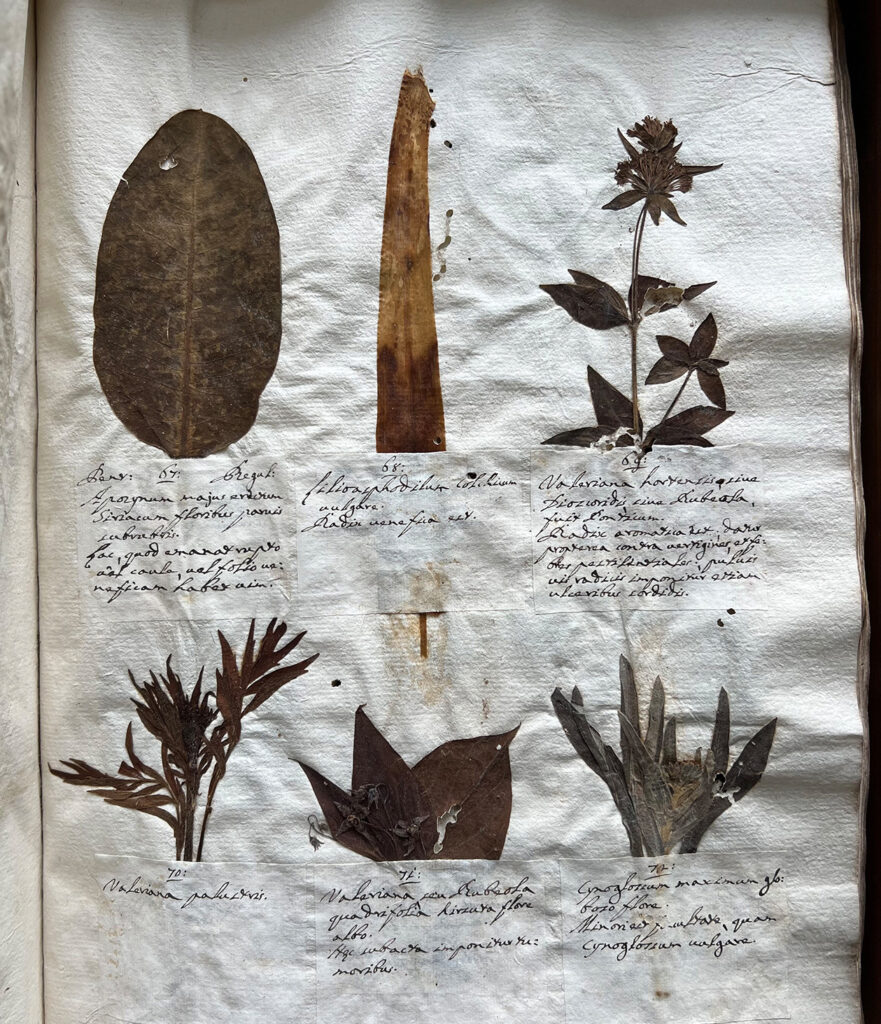Historical herbaria from Andechs Monastery handed over to the Bavarian State Collection for Botany
The Heimatverein Erling-Andechs has handed over two historical herbaria from the Andechs Monastery to the Bavarian State Collection for Botany (SNSB-BSM) – among them probably the oldest herbarium known so far in Bavaria. The two herbaria were ceremoniously presented on July 2023 to Prof. Dr. Gudrun Kadereit, director of the Bavarian State Collection for Botany and the Botanical Garden Munich-Nymphenburg.
The Bavarian State Collection for Botany can consider itself lucky: It is only thanks to the attentive members of the Heimatverein Erling-Andechs that the two precious herbaria were discovered and their value recognized. The historical treasures came to light in the monastery of Andechs quite by chance during construction work in the attic. They are two historical herbaria, i.e. collections of dried plants glued onto so-called herbarium sheets. The two “Andechs herbaria” date from 1742 and 1878 respectively, making the older of the two probably one of the oldest – if not the oldest – herbaria from Bavaria known to date – rescued by chance in the Andechs Monastery and now expertly preserved and scientifically curated in the Bavarian State Collection for Botany.
The younger of the two herbaria contains plants that, according to the label, were collected by “P. Ambrosius Böck […] in Andechs in the summer of 1878” and contains about 100 pressed plants from the area around Andechs that were preserved in newspapers. The older herbarium is designed in bound book form, as a so-called plant book, and contains 106 paginated pages. Its title “Sylvester de Boricanis ex Castro franco. Anno D’ 1742 Padua Mense Maij” gives clues to the plant collector: Sylvester de Boricani from Castelfranco. The year probably refers to the month and year of the production of the herbarium book in the month of May 1742.
“It is unlikely that May 1742 means the date of collection of the plants. Among the many plants pressed in the flowering state in this work are quite a few that do not flower in May, such as viper’s bugloss, medicinal zest, and hyssop. It is more likely that the individual plants were collected and pressed over a longer period of time, and only the complete work was completed in Padua in May 1742,” suspects Dr. Andreas Fleischmann, curator of flowering plants at the Bavarian State Collection for Botany.
Three to five plants are pasted on each page in the booklet and provided with a numbered label, which sometimes contains a short descriptive Latin text in addition to the plant name. Predominantly plants from the Mediterranean area are represented, but also some from temperate regions. Some ornamental plants, such as nasturtium, and many medicinal plants, were probably collected in a monastery garden. The plants are largely sorted according to their relationship. The labels indicate the name of the plant, sometimes supplemented by its intended use, e.g. “for medicinal purposes”. This “Andechs Herbarium” is a historical and scientific treasure. In Germany, there are probably only very few copies of such old herbaria: The oldest of these is the Ratzenberg herbarium in the Ottoneum in Kassel, which was established from 1556 to 1592. There are also three even older herbaria in the Göttingen herbarium: The Albrecht von Haller Herbarium and the Plantae Malabaricae each date from 1732-1733, and the Herbarius Vivus, originally from Leiden in Holland, was probably created around 1700.
The Bavarian State Collection for Botany, where the two precious Bavarian plant collections are now housed, is part of the State Natural Science Collections of Bavaria (SNSB). It was founded in 1813 as the “Herbarium Regium Monacense” (Royal Munich Herbarium) by King Max I Joseph and the Bavarian Academy of Sciences, and today comprises more than 3.2 million herbarium specimens – including some very old specimens, some of which date back as far as the late 17th century and were added via historical plant collections. But the “Andechs Herbarium” is now the oldest herbarium that the Munich State Botanical Collection has ever received.
Contact:
PD Dr. Andreas Fleischmann
SNSB Botanische Staatssammlung München & GeoBio-Center LMU
Tel.: 089 17861 240
E-mail: fleischmann@snsb.de
Dr. Hajo Esser
SNSB Botanische Staatssammlung München
Tel.: 089 17861 264
E-mail: esser@snsb.de




